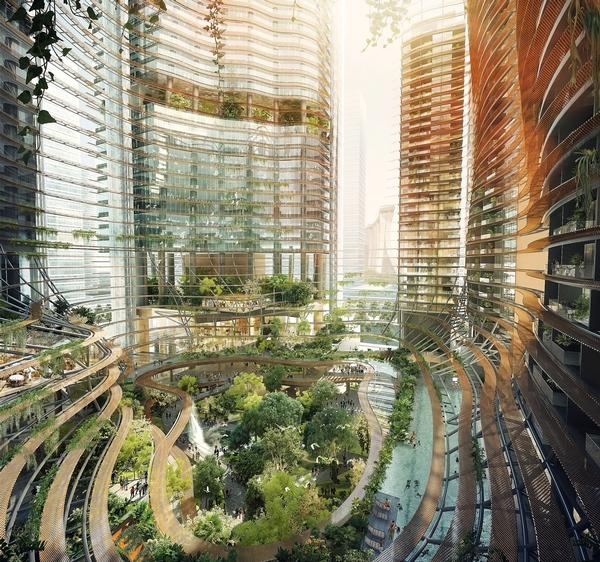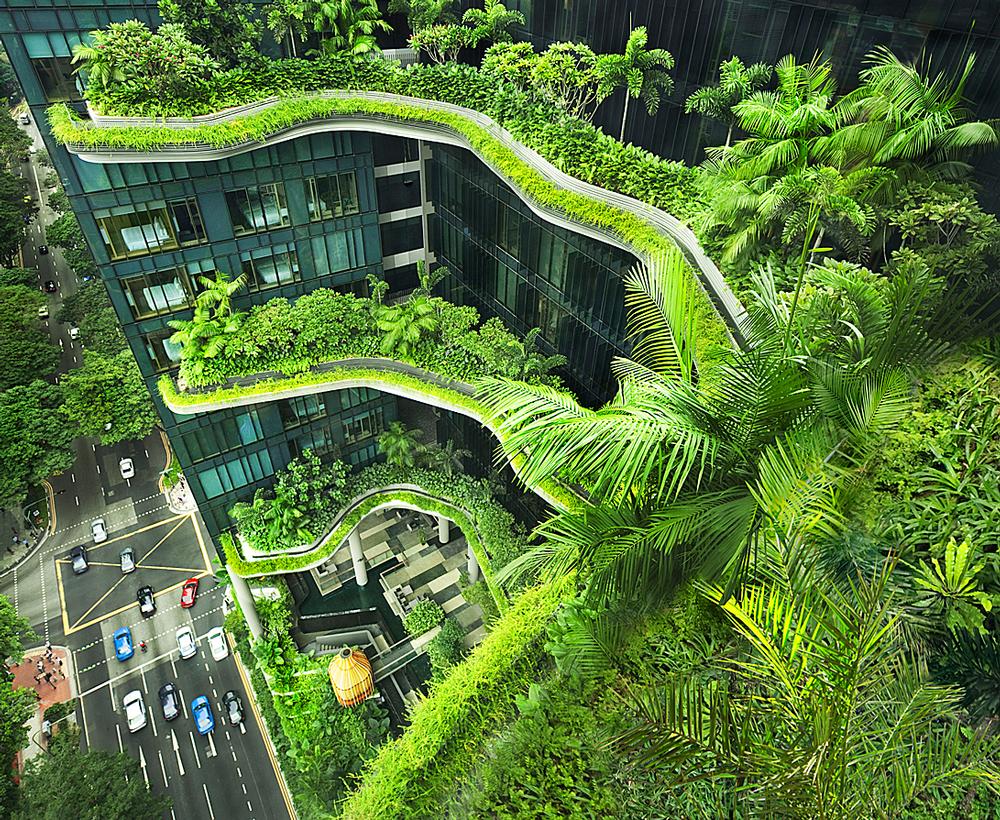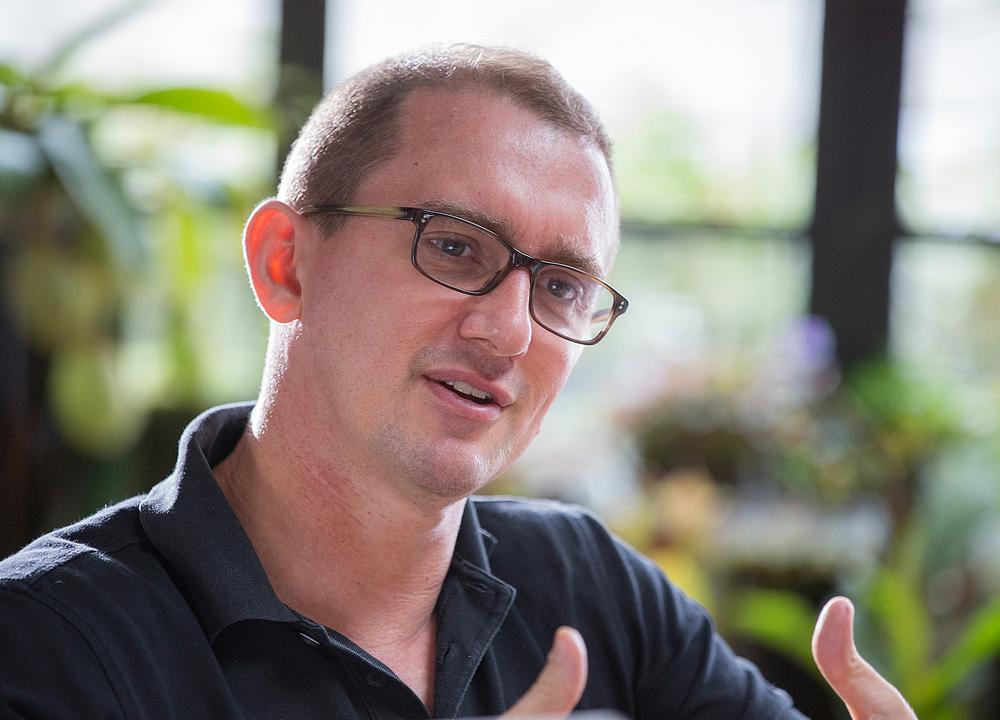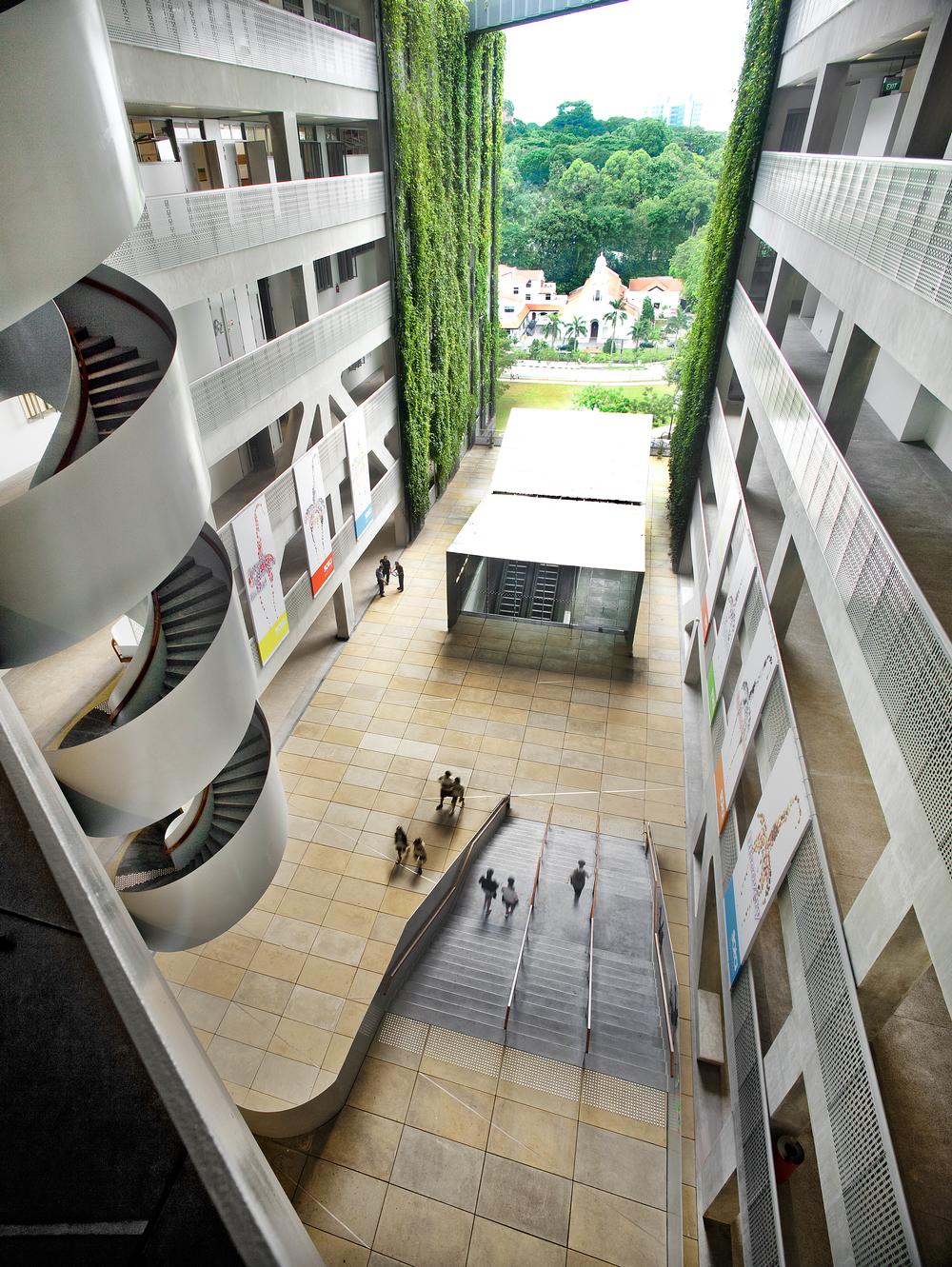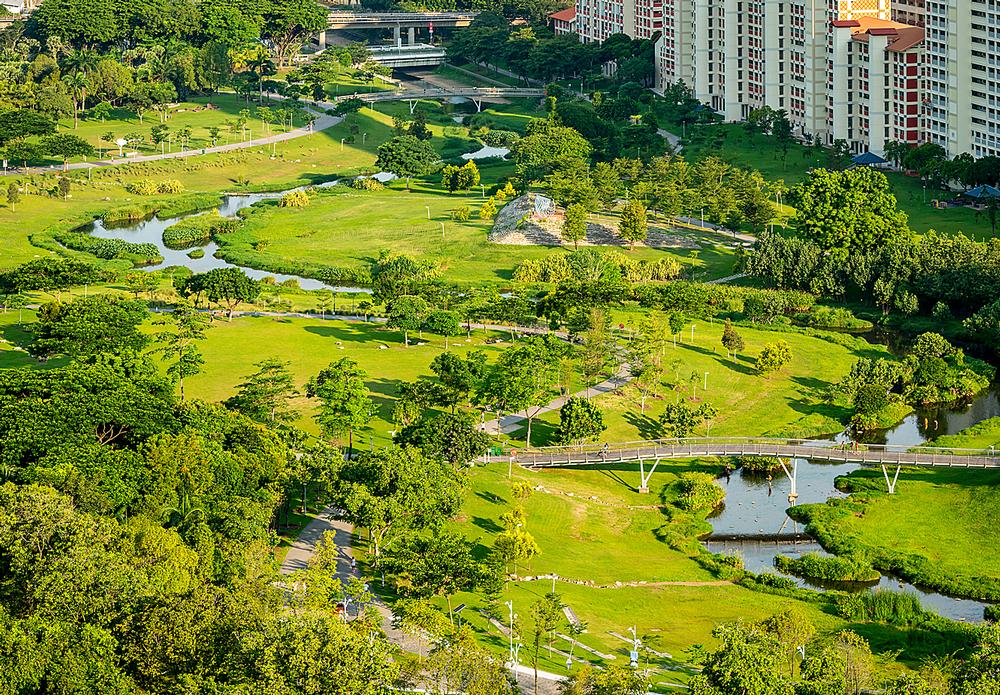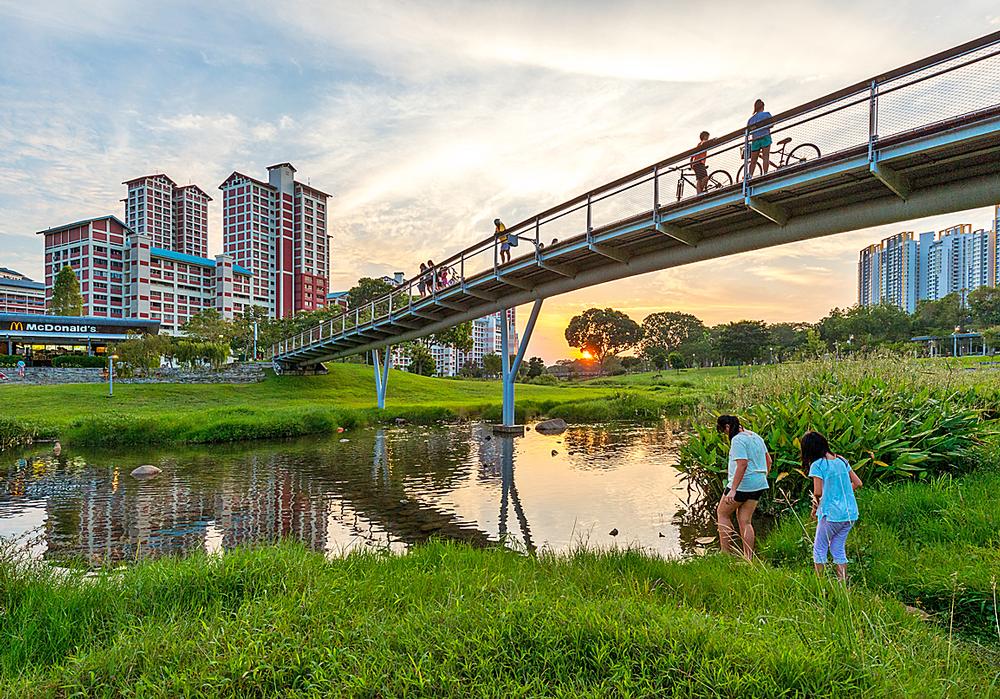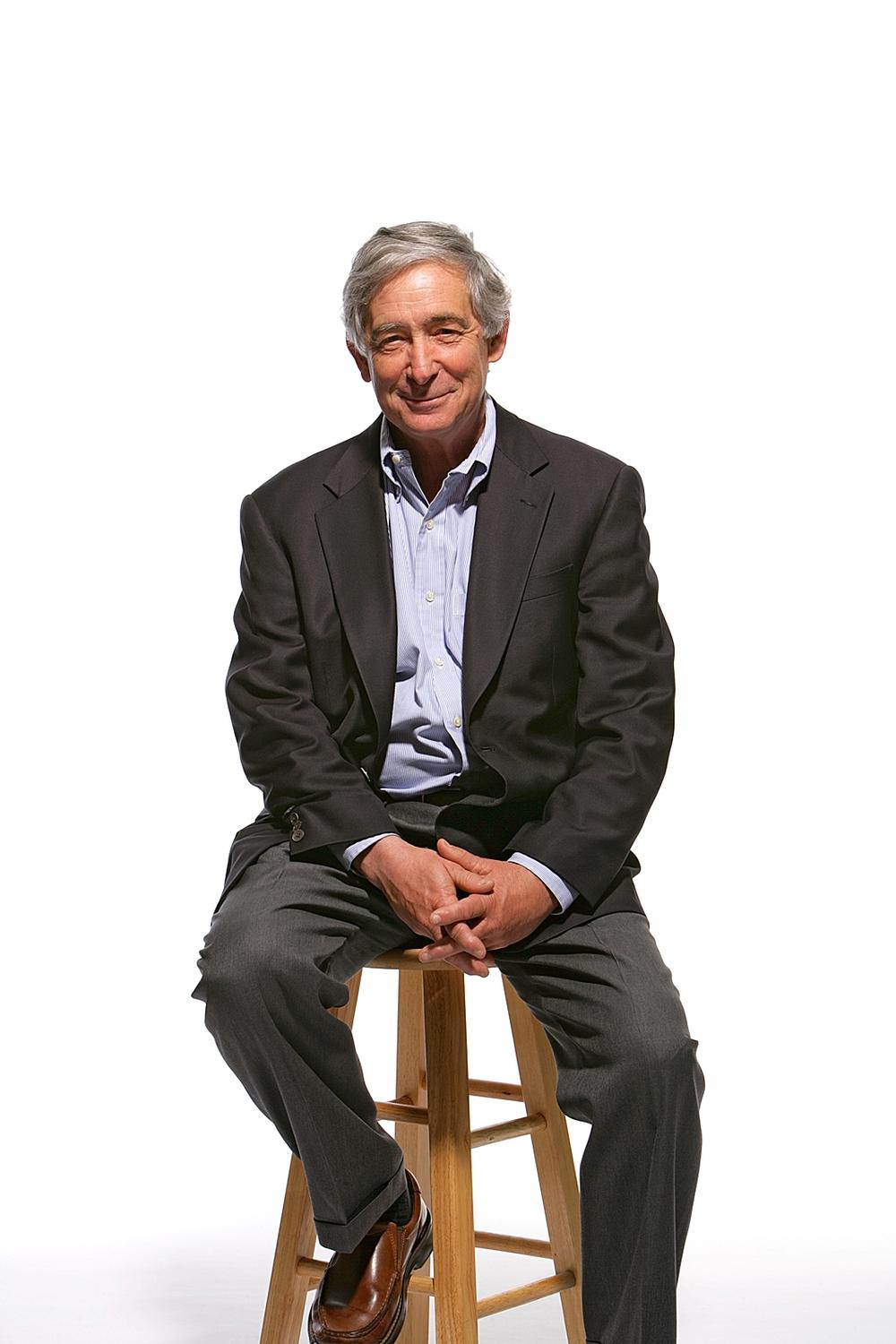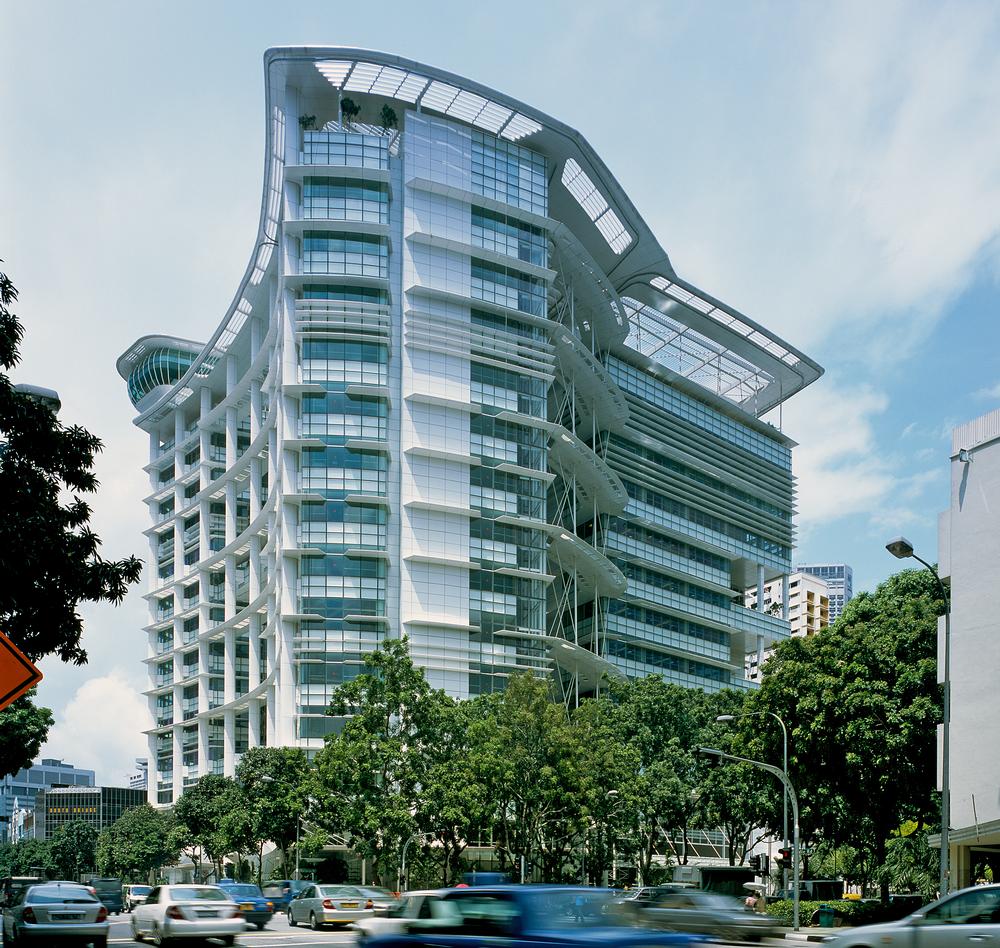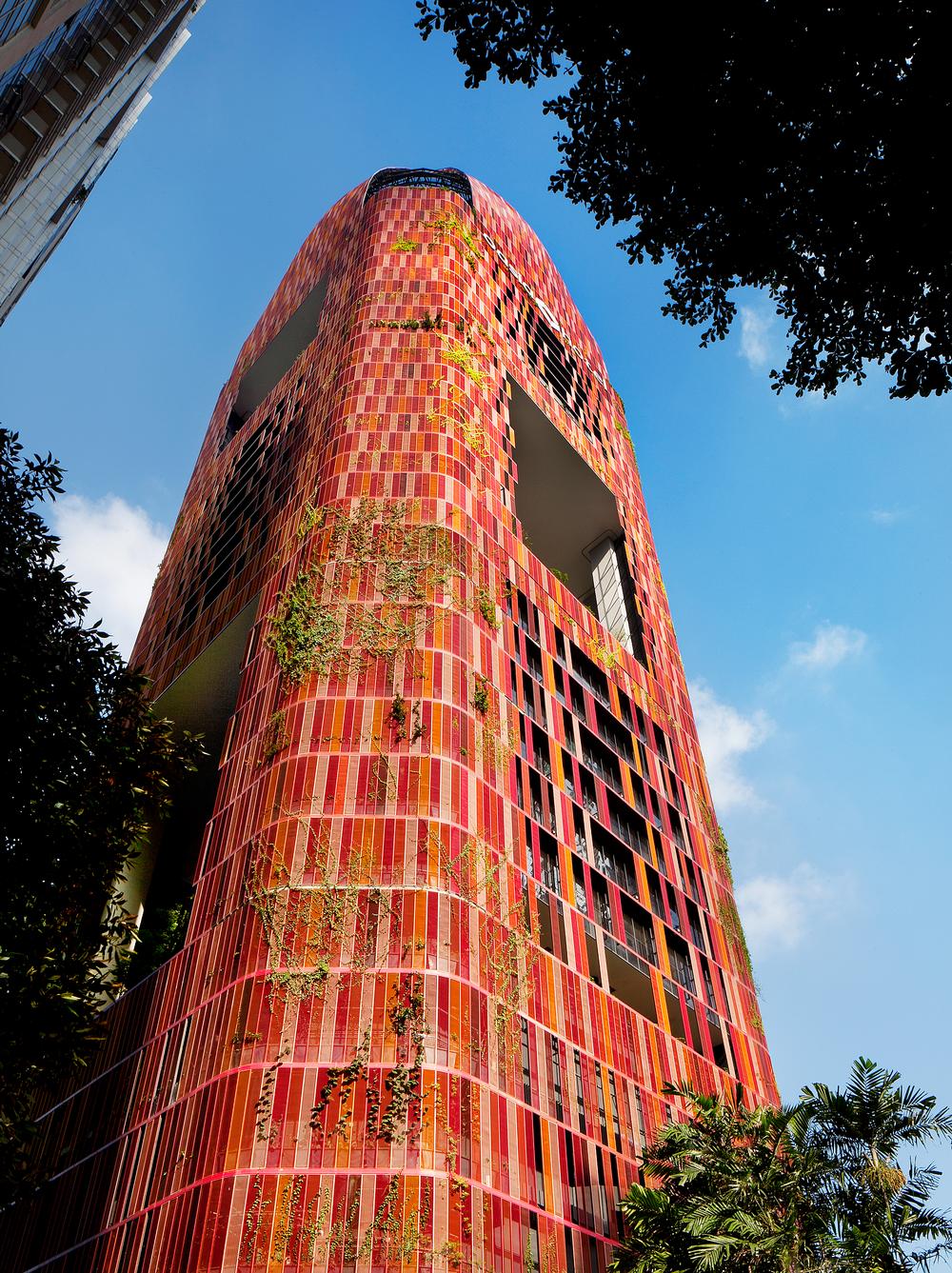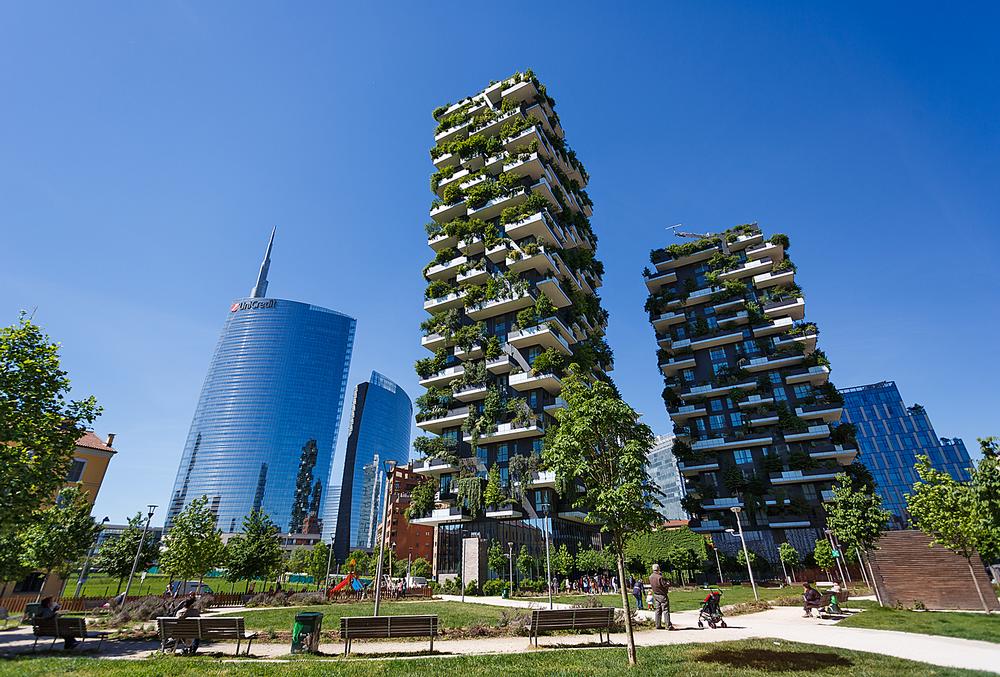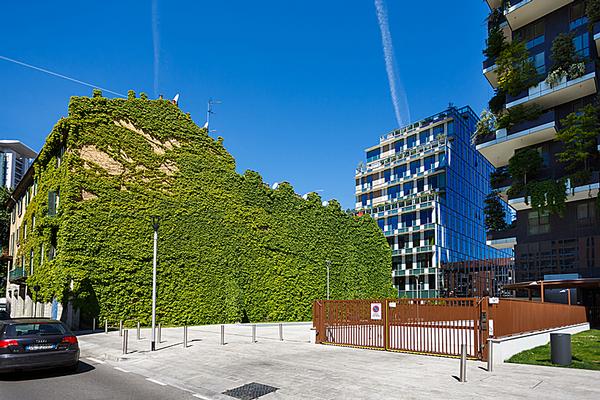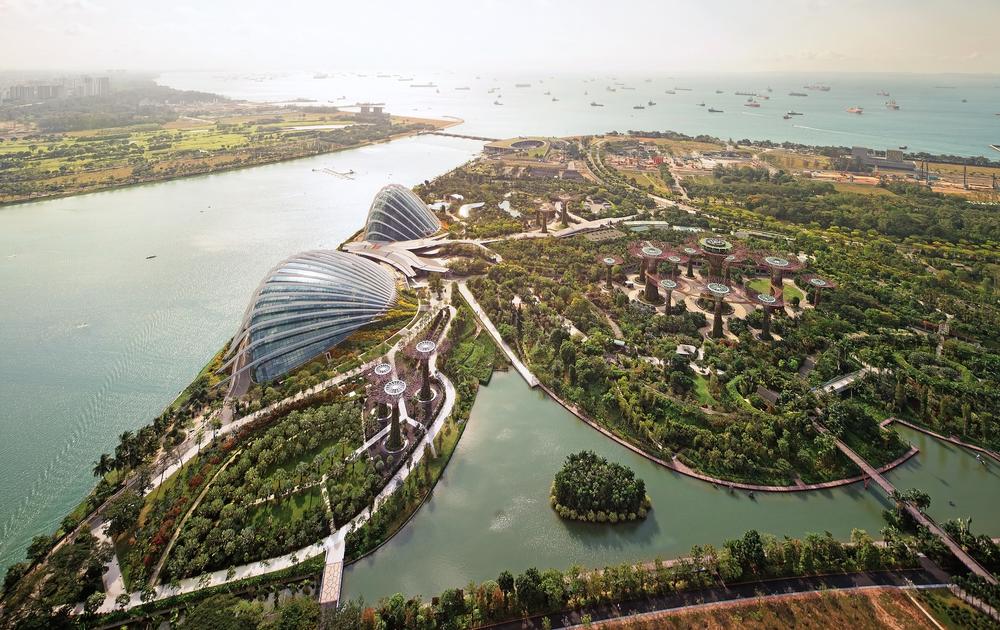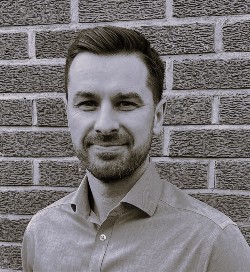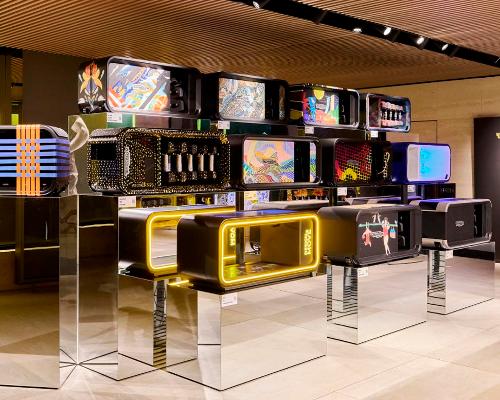features
Biophilic design: Greening Singapore
When Singapore gained independence in 1965, the vision was to create a true garden city. Christopher DeWolf takes a look at how today's architects are bringing nature into this dense urban environment
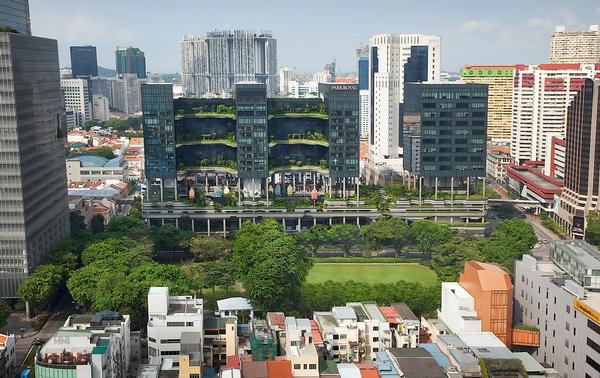
The Parkroyal on Pickering is the kind of building that inspires a double-take. At first glance, the hotel’s four curtain glass towers glint in the bright Singapore sun like any other high-rise. Then you notice they appear to be floating on a shimmering bed of greenery, trees and vines swaying in the gentle tropical breeze. In fact, the block-long hotel has 15,000 square metres of green space built into its terraces and roof decks, more than twice the total land area and more greenery than in the whole of Hong Lim Park, a grassy patch of land across the street from the Parkroyal. Lushly planted balconies project out from the hotel’s upper floors, giving many rooms a close-up view of palms, shrubs and broadleaf evergreens.
Staff at the Parkroyal like to advertise the property as a “hotel in a garden,” and it’s a feature that sells. “The room rate of the hotel is more than double their projection,” says the hotel’s architect, Richard Hassell. “Because of the demand, they kept raising the room rate, and people kept coming, so they raised it more. I think that has been almost entirely due to people seeing images of this hotel dripping with greenery and thinking, ‘I would love to stay there.’
Hassell is co-founder of Singapore-based architecture firm WOHA, which specialises in green architecture – sustainable, yes, but also infused with nature. The façade of WOHA’s School of the Arts is sheathed in greenery, while the firm’s latest project, a 30-storey hotel/office tower called Oasia Hotel Downtown, is not only coated in creepers and flowering plants, it is punctured at various intervals with open-air sky gardens. All told, the building contains 750 per cent more green space than the lawn that occupied the site before. “We love nature,” says Hassell. “I recently did an exhibition of some work from my school days and I realised that even then there were plants all over the buildings.”
Hassell is not alone. Some have called Singapore a 'biophilic city,' a place where nature plays an integral role in urban life. “You arrive in Singapore and you immediately feel you’re immersed in nature,” says Timothy Beatley, an architecture professor at the University of Virginia and the author of Biophilic Cities: Integrating Nature Into Urban Design and Planning. “It’s probably our best example of a vertical green city.” Most Singaporeans live in high-rise housing estates, but more than 47 per cent of the city-state’s land area is dedicated to public green space, compared to 14 per cent in New York City. London is just as green, but it is also much less densely populated.
Recent years have seen a shift to an even deeper, more meaningful relationship with nature, one that encourages biodiversity and sustainable lifestyles. For end users, biophilic design principles have been credited with improved mental and physical health and higher property values. The question is just how far these values can go. “Green design has been progressing up to the level where people don’t know where to go,” says Malaysian architect Ken Yeang. “The straw a lot of people are grasping at is biophilia. But just doing green buildings isn’t enough. It’s working at the tail end rather than the front end. What we need to do is design green infrastructure and green cities rather than just green buildings.”
THE CASE FOR NATURE
In 1984, American biologist Edward O Wilson published his book Biophilia, in which he argued that humans have an innate bond with other living systems. Since then, researchers have found that a connection to nature can lower blood pressure, reduce stress, improve attentiveness, boost creativity and make us generally happier people. And yet the past two centuries of urbanisation have nearly severed our ties with nature, eliminating it from our lives in the worst cases and at best reducing it to decoration – a flower pot on the windowsill, a garden weeded, pruned and rid of pests.
Biophilic design aims to bridge the gap between the natural world and the built environment. “We have this need to affiliate with nature, but the built environment is where we spend 90 per cent of our time,” says Stephen Kellert, a professor emeritus of social ecology at Yale University and the author of several books on biophilia. In many cases, that built environment was designed to take us as far from the natural world as possible. “I worked on a 1950s school renovation, and it had windows up high so kids wouldn’t be distracted by looking outside,” says Kellert. Department stores, shopping malls, sleek apartments – the same mentality informs them all.
That wasn’t as much of a problem in Singapore. When the city gained independence from Malaysia in 1965, its founding prime minister, Lee Kwan Yew, was intent on turning it into a garden metropolis. “Singapore was actually practicing biophilia without knowing the word existed,” says Lena Chan, the deputy director of the National Biodiversity Centre. Major roads are lined by lush plantings, and in recent years, Chan and others have successfully pushed for these gardens to include more native species in order to create a complete ecosystem. “They are selected carefully for butterflies and dragonflies, because when you see these insects around, birds are going to come, lizards are going to come. It perpetuates itself,” says Chan.
Increasing human contact with nature is another goal. Several kilometres away from the Parkroyal on Pickering, in the vast tracts of high-rise housing estates known as the Heartlands, a concrete drainage channel in Bishan-Ang Mo Kio Park was transformed into a naturalised river with wetlands and rocks. “Before, it was a non-usable space, and it was dangerous because the water was very fast,” says Tobias Baur, a landscape architect with Ramboll Studio Dreiseitl, the firm that undertook the naturalisation project as part of a team of designers. “It was a dead zone for the people and vegetation.”
Tearing up the concrete and replacing it with rocks and soil slowed the flow of the water, which allowed vegetation along the river to absorb more nutrients. Whereas the drainage channel was designed to funnel huge amounts of floodwater out to sea, the new river has a more constant flow, as the surrounding soil absorbs excess water. “We’re bringing back flora and fauna,” says Baur. “We have an increase in biodiversity of 30 per cent – a lot of new birds, new species coming in.” And because the river is no longer a raging torrent when it rains, fences were taken down to allow public access. “They can get their feet wet, catch fish, look at the flora and fauna,” says Baur.
Ken Yeang has a similar goal with his architecture. His design for Singapore’s National Library includes a total of 6,300 square metres of open-air green space on multiple levels throughout the building. Since the library opened in 2005, Yeang has delivered even more ambitious projects in Singapore, including Solaris, a high-rise research facility whose six green decks help reduce energy consumption by 36 percent. Yeang says his goal is to create “constructed ecosystems” that enhance biodiversity. “What I try to do in all my designs is not just put vegetation in my buildings; I create different types of habitats for different species, which involves green walls, green roofs, green terraces, and within each of these habitats I identify the native fauna I want to bring in.”
Those are also tactics employed by WOHA. “Singapore has very low winds and year-round rainfall, constant humidity and a very constant sun path across the sky – those factors combine to make it one of the easiest places in the world to put plants on buildings,” says Hassell. That hasn’t stopped biophilic architecture from emerging in more challenging locations, like Milan’s Bosco Verticale towers, which are studded with 730 trees and 16,000 other plants, with different species planted to take advantage of the building’s many microclimates.
“The main condition to planting in buildings is that it’s the equivalent of a very exposed location on the ground,” says Hassell. “It’s really just putting yourself in a plant’s eye view and saying. ‘What am I experiencing here?’ Almost any kind of condition you can dream up in a building, you can find its equivalent in nature.”
THE ISSUE OF MAINTENANCE
The thing about biophilic architecture is that, unlike more tech-centric forms of sustainable building, it actually looks green. “It’s a movement – just like Modernism – and it should have a whole new style. It should be hairy. It’s not pristine,” Yeang said in 2011. Hassell notes that some traditional modernists hate his buildings. “They have almost the opposite reaction of most people – it’s revulsion, like the building is something mouldy or dirty.”
But neither Hassell nor Yeang say it is difficult to convince clients of the benefits of shrouding their buildings in greenery. Most of their concerns have to do with the cost of maintenance. “Whenever I design a building I will assess the number of plants and tell the client, ‘As far as maintenance is concerned, this is a three gardener building or a four gardener building,’ and that’s all they need to budget for,” says Yeang. Both architects make sure that all of the greenery in their buildings is easily accessible in order to reduce maintenance costs. “You don’t need specially trained gardeners who need to hang down from the outside of the building,” says Hassell.
Many of WOHA’s projects make use of sustainable features like natural ventilation and operable louvre systems that allow users to screen out the sun. Oasia Downtown Hotel takes that to another level by carving out a series of lushly planted sky lobbies cooled by high volume low speed fans. Some of the sky gardens have lawns, others swimming pools, restaurants or flexible gathering spaces.
“The big idea behind that is that as cities become more and more dense, the ground level is under enormous pressure to provide many things to many people, yet when you talk about quality of life, people talk about parks and childcare centres – things that normally happen on the ground and give release to density,” says Hassell. “Creating more ground and amenity space up in the building is a very simple idea but it’s very powerful. It affords people all kinds of new and exciting lifestyle opportunities.”
But lifestyle is only a small part of the equation. After all, what’s the point of a green building if it isn’t green in an ecological sense? Yeang is wary of greenwashing and he is equally concerned by box-ticking – architecture that meets the requirements of LEED and other similar certification programmes, but doesn’t do anything to change the way we live. “The next era of green design has to be ecology based,” he says. “We should look into how we can integrate everything human beings make with the natural environment in a seamless way.”
That’s especially pertinent in Singapore, which increasingly suffers from toxic haze caused by farmers and palm oil companies in Indonesia that clear their land through slash-and-burn practices. The smog was particularly bad last year, and in response to the crisis, Singapore passed a law that allows it to sue pollution-causing companies beyond its borders. The whole episode serves as a reminder that, however much you can do at home, environmental issues are global.
WOHA’s response is to develop its own system of performance-based sustainability ratings. There is the green plot ratio – the amount of greenery relative to the square footage of the site – but also something Hassell calls the ecosystem index. "Ten is a fully functioning ecosystem that would have a similar range of species to the biotype for the location. Zero is no habitat, no food,” he says. If you stop evaluating buildings on how little they harm the environment and start judging them by how much they enhance it, says Hassell, it could push green architecture towards the tipping point it needs to make a real difference.
At that point, a building like the Parkroyal on Pickering won’t be a head-turner – it will be normal.
Marina One 'vertical forest' scheme tops out
Marina One, the lush garden-themed Singapore tower scheme designed by Ingenhoven Architects, has topped out in the city-state’s Central Business District.
Dubbed “the Green Heart," the high-rise, mixed-use complex will resemble a green mountain in the middle of the city.
Shrubs, trees, and flowers will appear on every floor of the four towers that form Marina One. Two large urban parks will flank the towers – two of which are conjoined at a height of 170m – and the space in between them will be occupied by a lush free-formed biodiversity garden, designed by landscape architects Gustafson Porter in conjunction with Ingenhoven and local firm ICN Design International.
The garden will provide a tranquil public gateway to a leisure zone spread across several public terraces, which will include restaurants and cafés, a fitness club, a food court, event spaces and retailers.
Marina One has been granted LEED Platinum pre-certification. In addition to the abundance of greenery, the environmentally-smart design will utilise solar power, sun-shading, energy-efficient ventilation and a rainwater harvesting system.
“Our environmentally-smart design aims to re-green the city and is a role-model for the rapidly growing megacities within the tropical and subtropical climate zones," said lead designer Christoph Ingenhoven. “We are glad that the development remains on track for completion for 2017 and are proud that Marina One will soon be a unique part of Singapore's skyline.”
